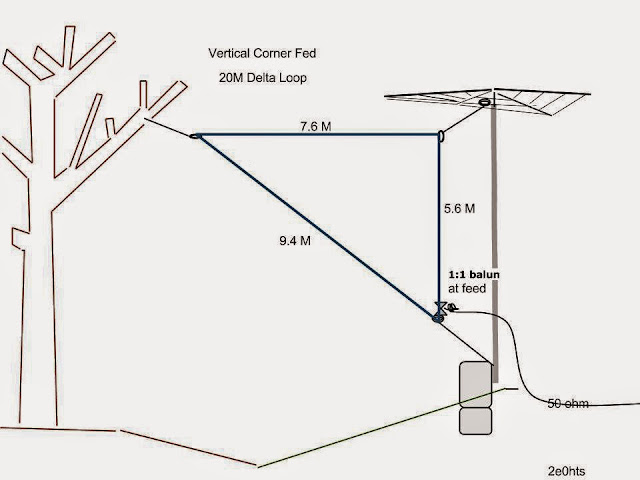2E0HTS makes QSO with PA1TNO via VO-52 Satellite


Today I successfully managed a contact using my FT-847 and vertical antenna by connecting with Earth orbiting satellite VO-52.
I monitored VO-52s location using satscape and once the satellite was in range I called cq on VFO B which was set at 435.250mhz lsb (uplink frequency)and at the same time I was tuning around VFO A set at 145.900mhz usb +or- 10kilo cycles.
You have to search up and down the receive frequency + or - 10ish quickly whilst transmitting audio, I did this until I heard my self on the downlink signal.
Once my voice was clear on the downlink I was called by PA1TNO-Eric who was located in Amsterdam in the NETHERLANDS.
Eric's signal and my own were constantly shifting frequency in an upward motion due to the speed of the travelling VO-52 satellite creating the Doppler effect.
I maintained continuous adjustment to the downlink RX signal but kept the uplink signal fixed on 435.250mhz lsb.
We both exchanged reports and locator's without any problems, I was excited and pleased with this kind of amateur radio activity, I had finally managed to make a successful DX QSO with Space communications and technology for the first time.
I have listened to many QSOs taking place on V0-52 and AO-51 and other satellites for many years, so at last Patience has paid off and enthusiasm to try more satellite communication has sparked so don't be to surprised if I post more on the subject.
73 and here is some techie stuff regarding VO-52.
VO-52 specs:
The satellite is spin stabilized. It spins at about 4 RPM.
UHF Uplink and VHF Downlink
Uplink transponder frequency: 435.250 MHz
Downlink transponder frequency: 145.900 MHz
Beacon frequencies: 145.860 MHz CW telemetry and 145.936 MHz unmodulated carrier
Transponder bandwidth: 60 kHz
Transmitter output power: 1 watt
Antennas: VHF and UHF turnstiles
Communication modes: CW, SSB, FM
Electrical power: Gallium Arsenide solar panels charging a Lithium Ion battery
Onboard computer: MAR 31750 processor in the spacecraft's electronic bus management
unit for attitude control, telemetry, telecommand for ground control, sensor and actuator functions.
Each transponder is recognized by its beacon.
The Indian transponder has an unmodulated carrier on 145.940 MHz.
The Dutch transponder is modulated with telemetry information on 145.860 MHz.
Both are linear transponders offering the CW, USB and FM modes of amateur radio communication. They operate Mode-B for U-V operation with UHF uplink and VHF downlink.








Comments
I keep trying and now I have a Brill rig I can at least attempt it :0)
the 746 is going on weds , I am taking it to LAM ..Needs Must :((
The 746 is cheap, I would have liked it but would need to part ex one of my rigs etc. Thats why I did not reply to your earlier quote h.i
I find SSB satellite easier to connect than FM so far?
73 and let me know if tha fancys a deal with the 767 (again). Chow
I never thought I was in the headlines of your website :-)
I enjoyed talking to you on VO-52, and hoping to hear you again soon!
73 from Eric, PA1TNO
It was a pleasure working you via VO-52 and you came through great!
I will be listing out for you and hopefully do it again soon.
All the best to you and yours, and a big thank you for commenting here.
73 regards from Simon 2E0HTS